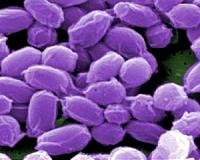| . |  |
. |
Boston MA (SPX) Sep 21, 2010 Terrorist networks are complex. Now, a mathematical analysis of their properties published this month in the International Journal of Networking and Virtual Organisations, suggests that the best way to fight them is to isolate the hubs within the network rather than trying to destroy the network as a whole through short-term battles. According to Philip Vos Fellman a Lecturer at Suffolk University, Boston, and member of the New England Complex Systems Institute, USA, tools used to analyze complex systems can also be used to study terrorist networks with a view to undermining them. Vos Fellman explains how terrorist networks are "typical of the structures encountered in the study of conflict, in that they possess multiple, irreducible levels of complexity and ambiguity." "This complexity is compounded by the covert activities of terrorist networks where key elements may remain hidden for extended periods of time and the network itself is dynamic," adds Vos Fellman, an expert in mathematical modeling and strategy. The nature of a dynamic network is akin to the robust Internet but contrasts starkly with the structure of the armed forces or homeland security systems, which tend to be centralized and hierarchical. Vos Fellman has used network analysis, agent-based simulation, and dynamic NK Boolean fitness landscapes to try and understand the complexities of terrorist networks. In particular, he has focused on how long-term operational and strategic planning might be undertaken so that tactics which appear to offer immediate impact are avoided if they cause little long-term damage to the terrorist network. Vos Fellman's computer simulations of terrorist networks suggest that isolation rather than removal could be the key to successfully defeating them. "The results which these simulation and dynamical systems modeling tools present suggest that quite literally sometimes less is more," says Vos Fellman, "and that operational objectives might be better directed at isolation rather than removal." He also points out that the simulations show that soft, or easy, targets of small cells within a network are, for the most part, not worth pursuing. Instead efforts should be focused on the hubs around which the network hinges. "If you are not focused on the top problems, then considerations of opportunity cost suggest that it may be better to do nothing rather than to waste valuable resources on exercises which are doomed to fail," he says. "The complexity of terrorist networks" in Int. J. Networking and Virtual Organisations, 2010, 8, 4-14
Share This Article With Planet Earth
Related Links Suffolk University The Long War - Doctrine and Application
 New contract shows anthrax threat real
New contract shows anthrax threat realWashington (UPI) Sep 20, 2010 A new multimillion-dollar government contract for a Maryland biological security research company indicates the threat of an anthrax outbreak as a result of bioterrorism remains a major priority for the Obama administration. Emergent BioSolutions Inc., which has headquarters in Rockville, Md., said it signed a contract valued at up to $186.6 million with the Biomedical Advanced Research ... read more |
|
| The content herein, unless otherwise known to be public domain, are Copyright 1995-2010 - SpaceDaily. AFP and UPI Wire Stories are copyright Agence France-Presse and United Press International. ESA Portal Reports are copyright European Space Agency. All NASA sourced material is public domain. Additional copyrights may apply in whole or part to other bona fide parties. Advertising does not imply endorsement,agreement or approval of any opinions, statements or information provided by SpaceDaily on any Web page published or hosted by SpaceDaily. Privacy Statement |